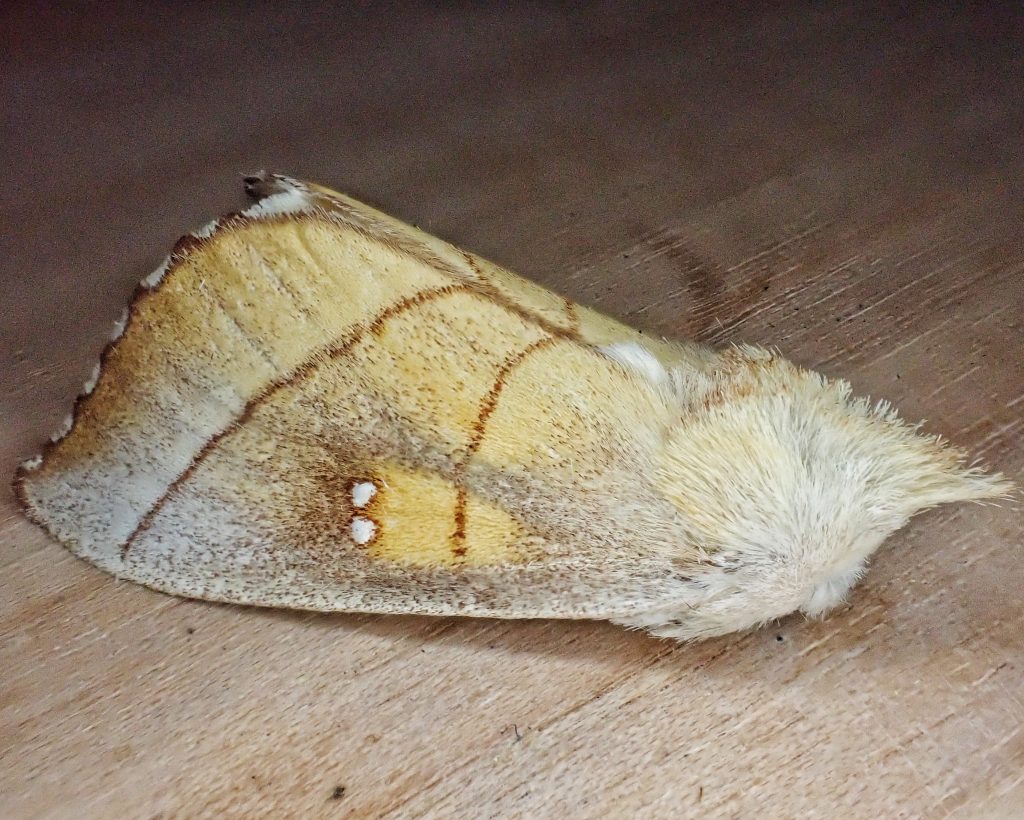
I seem to get one of these moths almost every time I run lights in mixed forests, but I don’t remember ever getting more than three in a night. Despite their familiarity they are always a joy to find, and a joy to look at. While they are not as spectacular as some moths, they are large and the white dots on the yellow brown background is very attractive. And the tufted aspect of the thorax hair is always fun on any Notodontidae or other moths that have them.
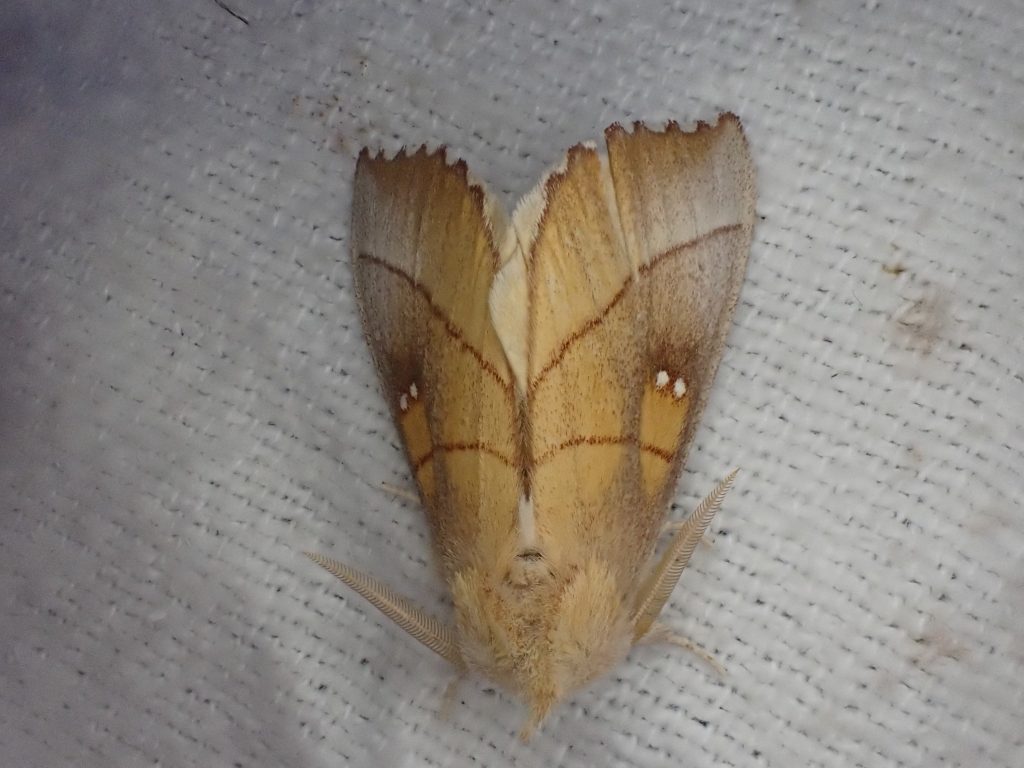
These moths are settlers, though it may take awhile for them to perch. But once they do park it, they almost always have to be shaken from the sheets at nights end. I’m always on the lookout for the obvious brown veins of their close cousin, Nadata oregonensis, especially when I know there are oaks about (since their larvae are oak specialists, whereas N. gibbosa larvae are generalists), but they have yet to grace my lights with their presence.
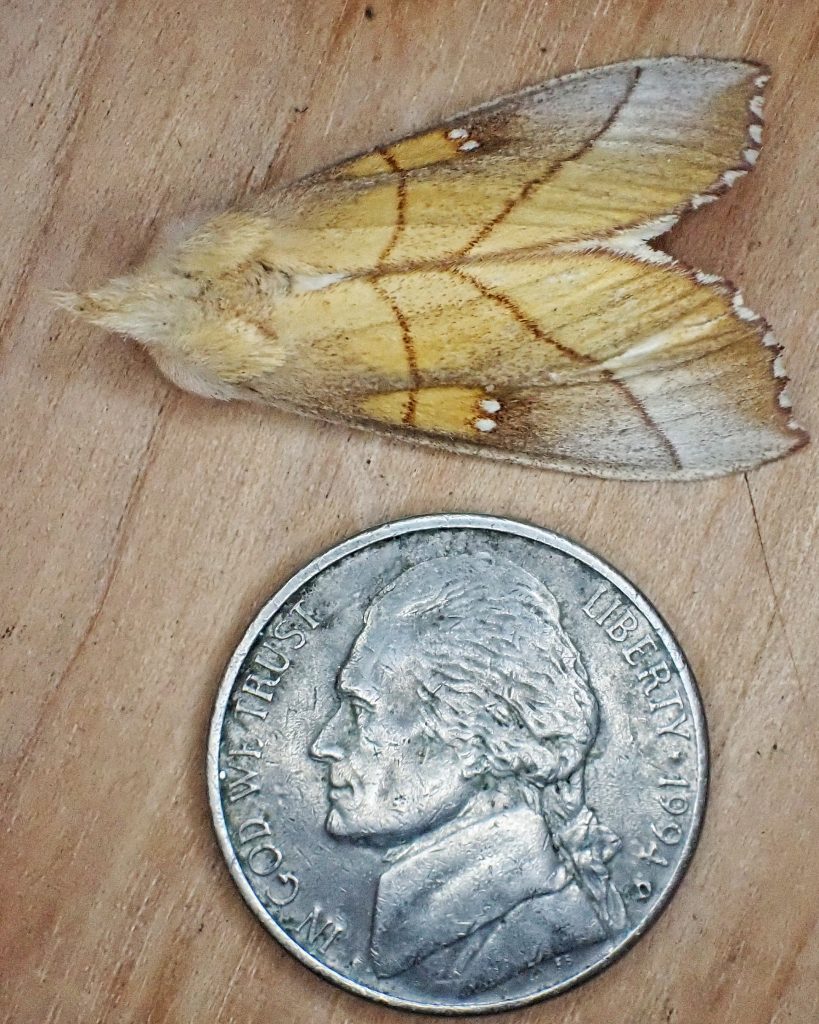
Description– “Nadata gibbosa is a common, large (FW length 22–27 mm), yellow and brown moth with the discal spot represented by two shiny white dots. This species is widely distributed in forests throughout our region and flies during late spring and summer. The lateral forewing has a sawtooth pattern, each notch filled with pale fringe. The color is powdery tan with yellow areas in the cell, on the posterior half of the forewing, and along the lines. The antemedial and postmedial lines are thin, brown, and smooth. The antemedial line is weakly excurved, and the postmedial lineis strongly oblique toward the base, straight except for an incurved segment at the posterior margin. White spots mark the anterior and posterior distal cell. The hindwing is light yellow to yellow-brown with a faint brown postmedial line and lack significant dark scaling along the veins. The thorax is light yellow brown with a large anterior tuft of loose scales. The male antennna is broadly bipectinate; that of the female is simple…The larva is smooth and green with a thin yellow mid-dorsal line and covered in tiny yellow speckles.” PNW Moths | Nadata gibbosa; some good photos of the caterpillars at Species Nadata gibbosa – White-dotted Prominent – Hodges#7915 – BugGuide.Net, http://mothphotographersgroup.msstate.edu/species.php?hodges=7915&state=PNW, and White-dotted Prominent Nadata gibbosa (J.E. Smith, 1797) | Butterflies and Moths of North America
Similar species– “The only similar species, Nadata oregonensis, which is restricted to areas with oaks, is hoary red-brown with dark veins on both wings.” PNW Moths | Nadata gibbosa
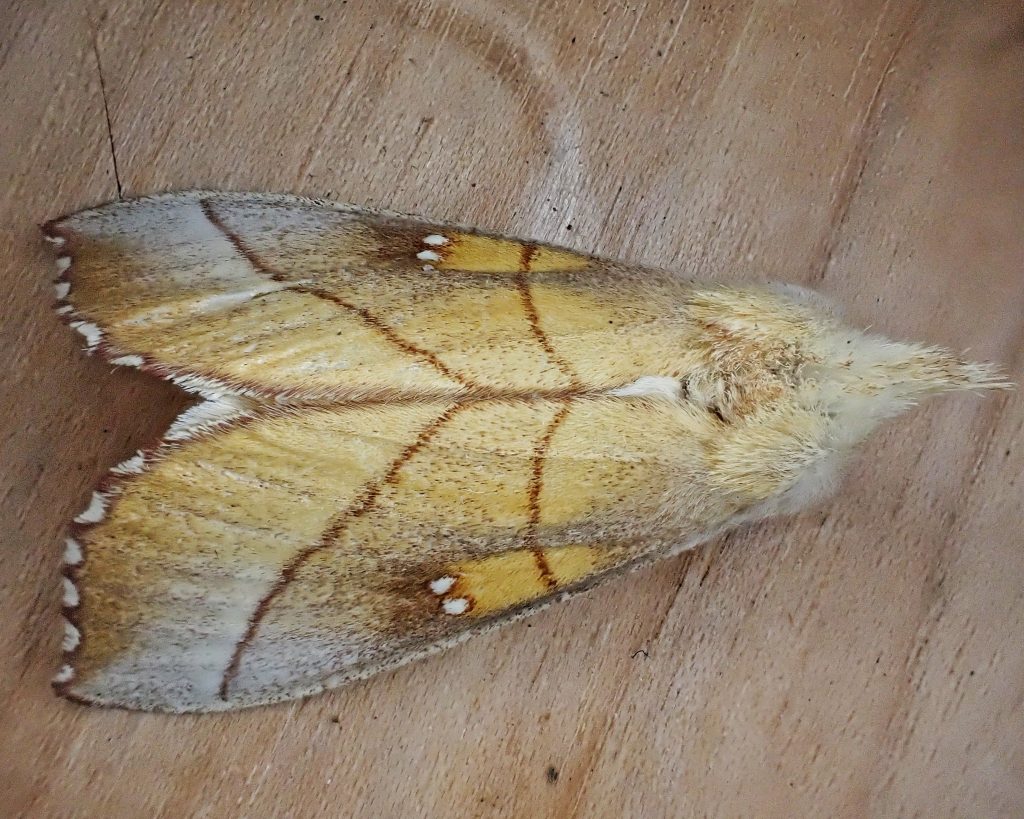
Habitat– “This species is common and widely distributed in hardwood forests and riparian zones throughout North America. In the Pacific Northwest, it is common in coastal rainforests, oak woodlands, and mixed hardwood forests at low elevations west of the Cascades, in mixed hardwood-conifer forests at middle to high elevations in the Cascades and Rocky Mountain region, and in riparian zones along creeks and rivers at low elevations east of the Cascades.” PNW Moths | Nadata gibbosa
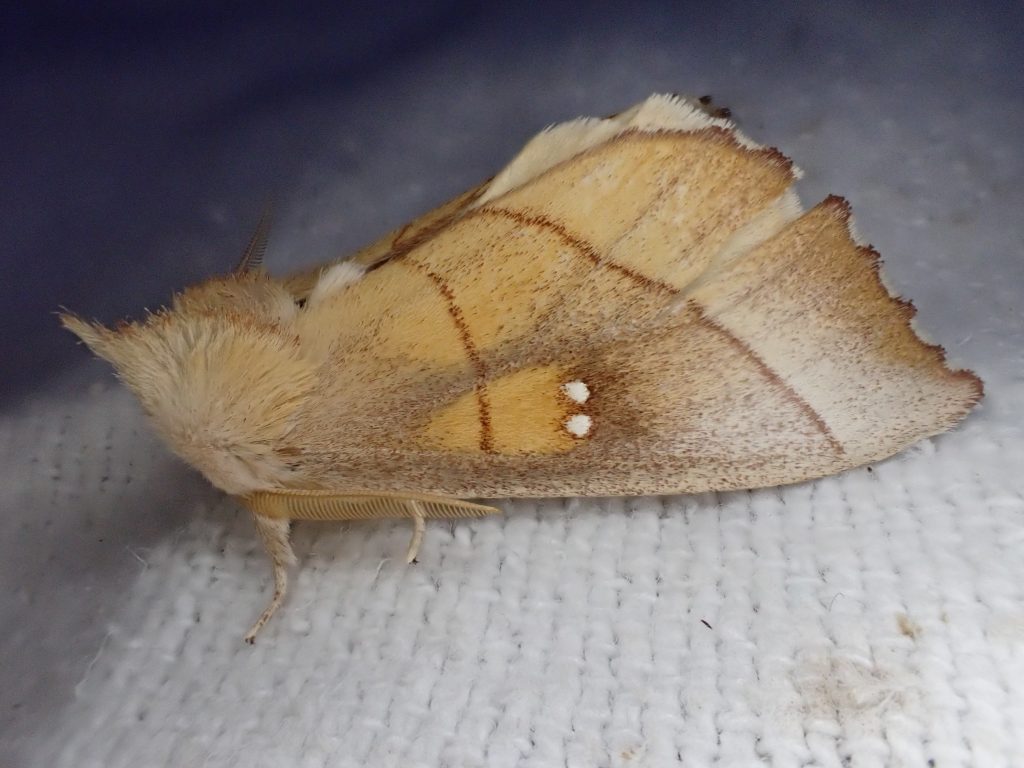
Range– “This species has a large range in North America. In the East it occurs from Nova Scotia to Florida. The western range includes the southern Rocky Mountains and California outside the Pacific Northwest…Nadata gibbosa is found in forests throughout the Pacific Northwest as far north as the Peace River region of northeastern British Columbia. It does not occur in steppe habitats but is found in the larger mountains of southern Oregon and Idaho.” PNW Moths | Nadata gibbosa
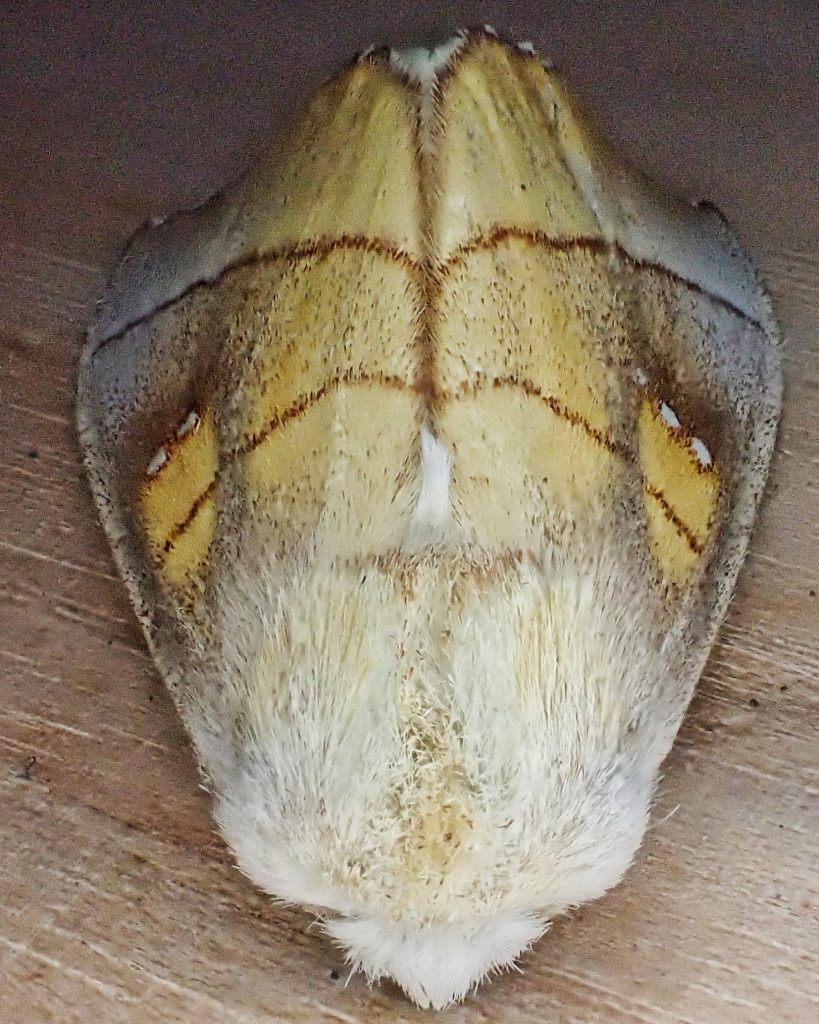
Eats– “This species is a generalist feeding on many hardwood trees and shrubs, particularly in the families Fagaceae, Betulaceae, Aceraceae, and Rosaceae…Like other prominent moths the adults do not feed” PNW Moths | Nadata gibbosa
Eaten by– Presumably insectivores of all classes; it is likely that the larvae are parasitized by various wasp and fly larvae, but I can find nothing specific for this species.
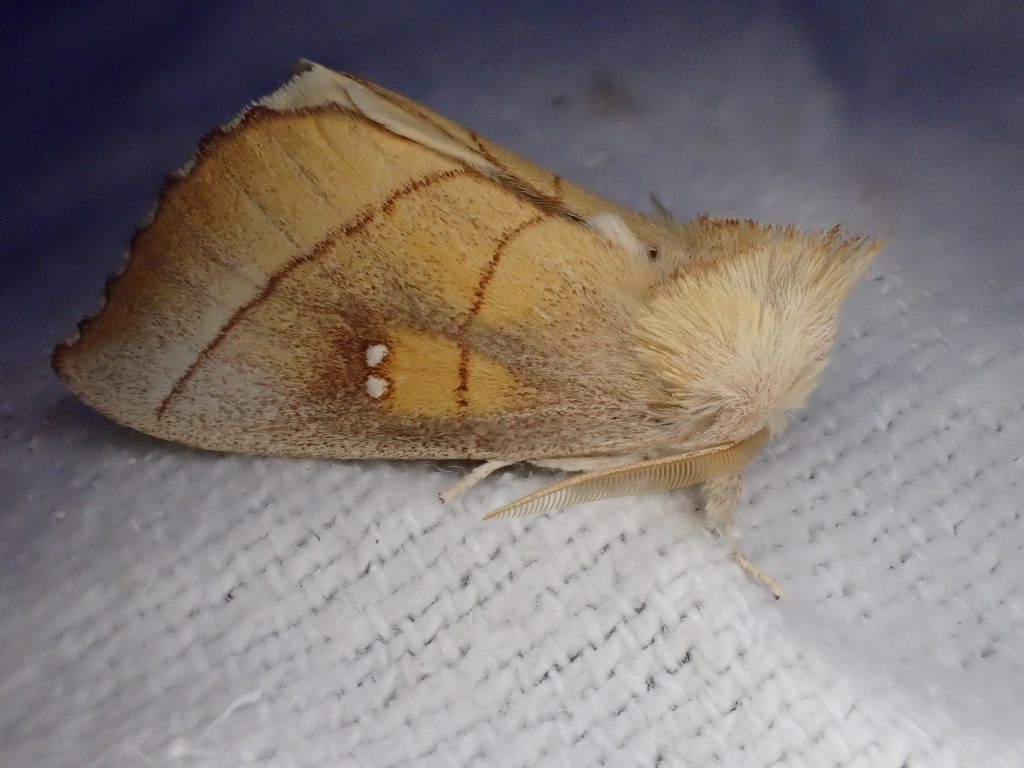
Adults active– Nocturnal; “The Pacific Northwest records are from mid-May to early August.” PNW Moths | Nadata gibbosa
Life cycle– “Adults appear to be single brooded in our region, although Forbes (1948) mentions that some populations have a partial second brood”. PNW Moths | Nadata gibbosa
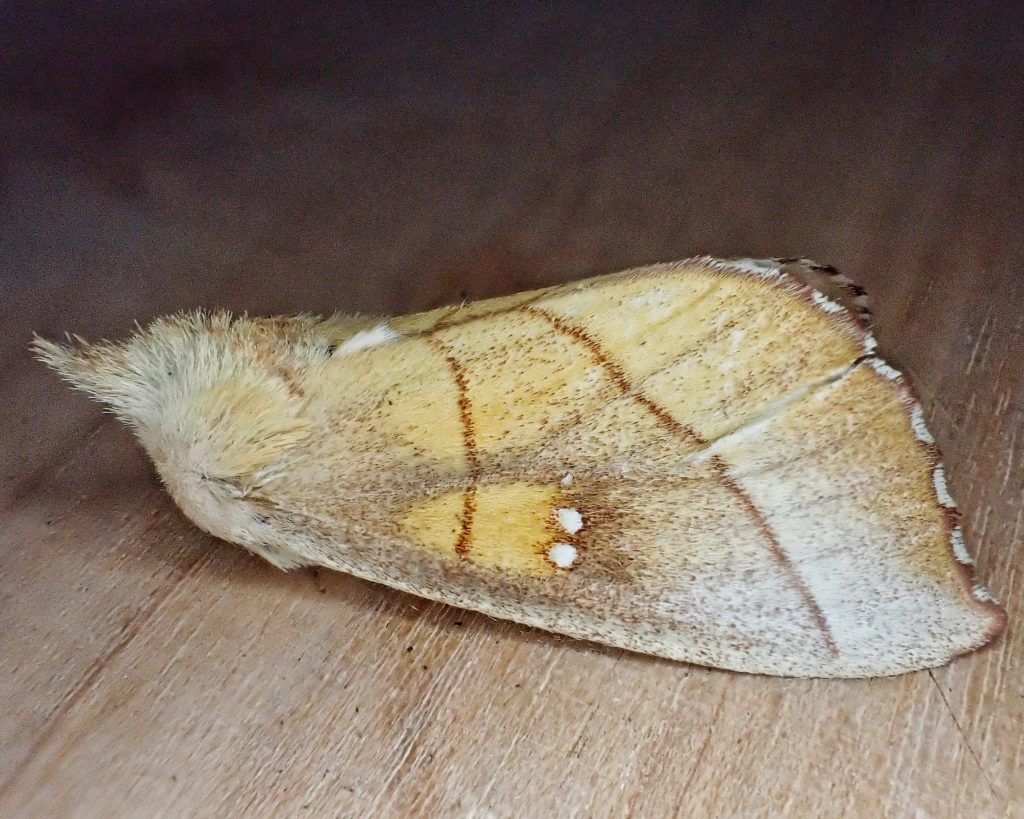
Etymology of names– “The names of at least three moth genera, Datana (Notodontidae), Nadata, (Notodontidae), and Natada (Limacodidae) are anagrams. These genera were named by Francis Walker in 1855, and perhaps only he knew which came first!” Genus Nadata – BugGuide.Net; the specific epithet gibbosa is from “Latin for humped (1) Probably a reference to the humped throax.” Species Nadata gibbosa – White-dotted Prominent – Hodges#7915 – BugGuide.Net
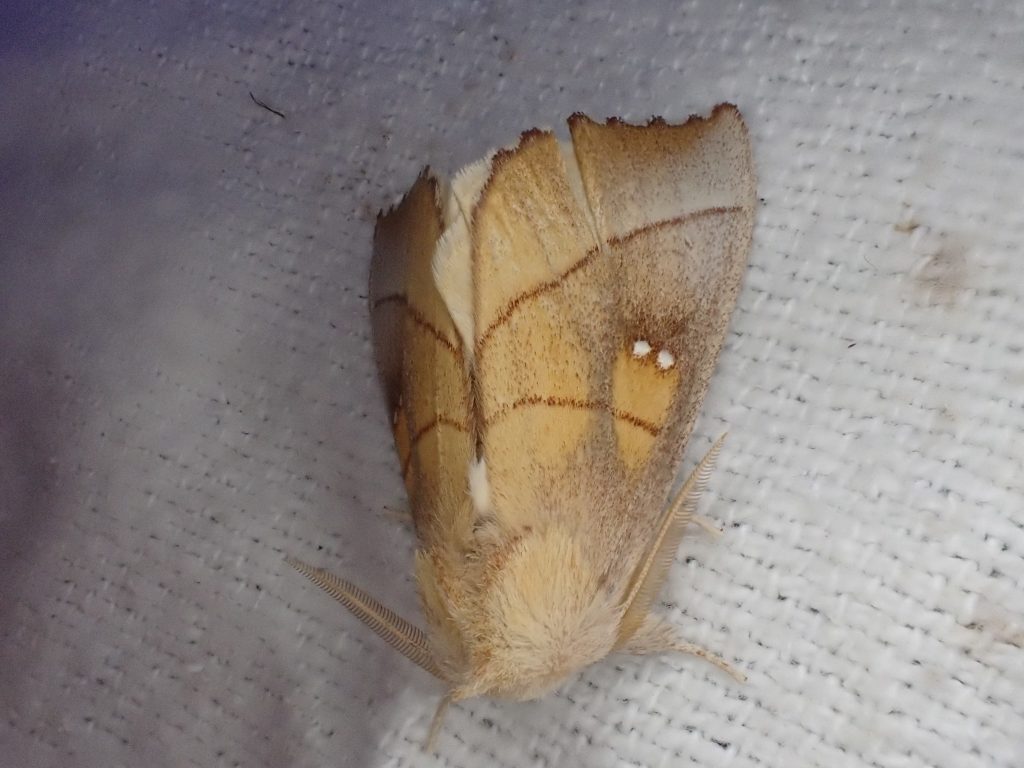
Species Nadata gibbosa – White-dotted Prominent – Hodges#7915 – BugGuide.Net
http://mothphotographersgroup.msstate.edu/species.php?hodges=7915&state=PNW
White-dotted Prominent Nadata gibbosa (J.E. Smith, 1797) | Butterflies and Moths of North America
https://en.wikipedia.org/wiki/Rough_prominent
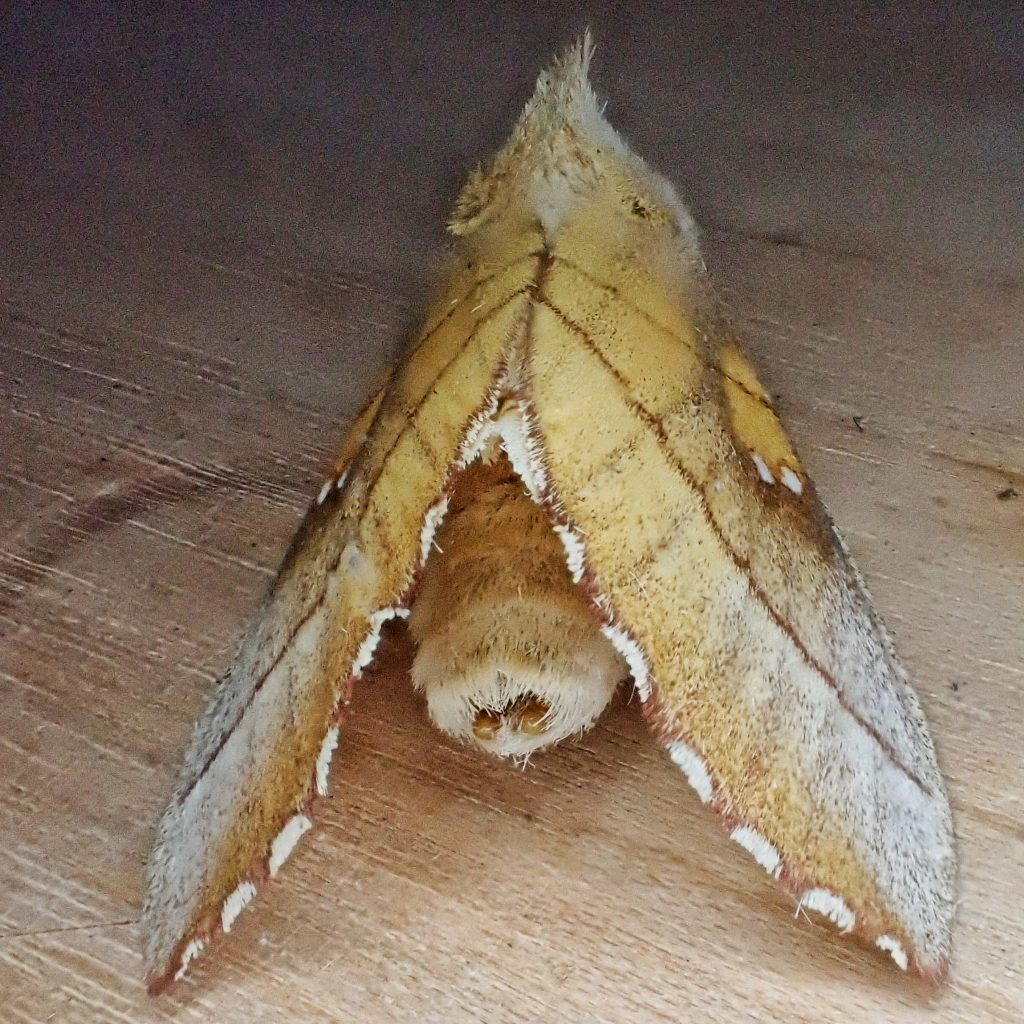
2 thoughts on “Nadata gibbosa (White-dotted Prominent)”